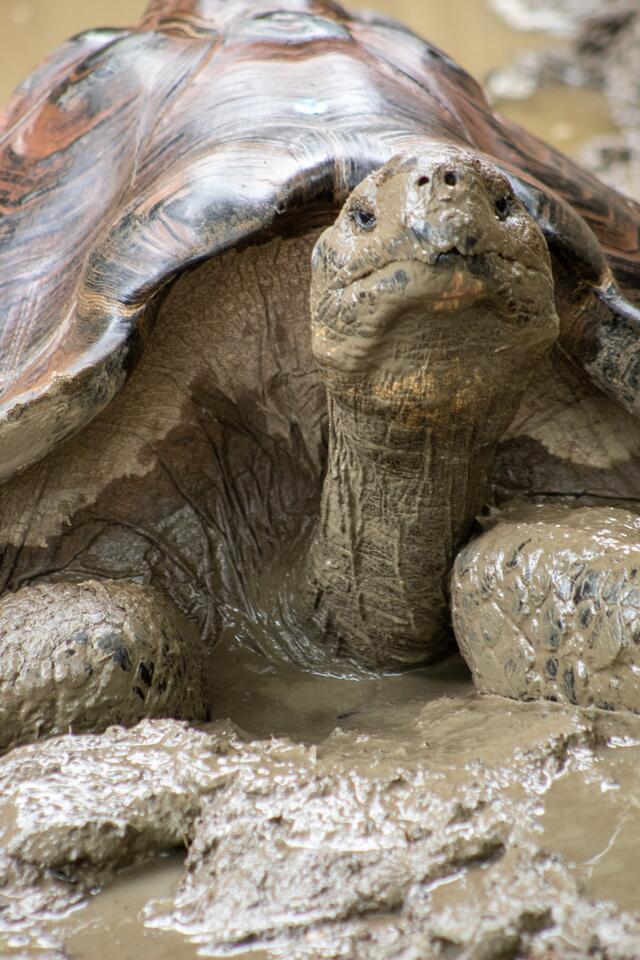Admission CTAs
Studying Animals With Large Bodies and Long Lifespans
Scott Glaberman, Assistant Professor, Environmental Science and Policy, and Ylenia Chiari, Assistant Professor, Biology,want to understand why Galapagos and Aldabra giant tortoises are both large and long-lived. Body size and longevity are two traits that vary tremendously across animals. Some species weigh less than a gram and/or live only several weeks, while others weigh thousands of kilograms and/or live for several hundred years. What could cause such remarkable variation in body size and lifespan? Turtles are a promising group to study this question because some species are extremely small, while others, like Galapagos tortoises, are gigantic and long-lived. Previous research suggests that Galapagos tortoises, along with some other large, long-lived animals like elephants, are particularly good at removing old or damaged cells from their bodies before they harm the individual - a process called apoptosis.
The researchers hypothesize that large, long-lived tortoises evolved enhanced endoplasmic reticulum (ER) stress responses that have contributed to the evolution of remarkably large body sizes and long lifespans. The ER stress response is essential for the basic functioning of cells.
To test this hypothesis, the researchers will do three things.
First, they will perform a comprehensive comparative genomic analysis to identify candidate genes with signatures of positive selection and duplication/loss in large, long-lived tortoises versus their smaller, shorter-lived relatives, prioritizing genes with known involvement in ER stress.
Second, they will determine if cultured cells from large, long-lived tortoises and their smaller, shorter-lived relatives respond differently to induced ER stress as suggested by their preliminary work.
Finally, they will use gene overexpression and small interfering RNA (siRNA)/CRISPR-generated knockdowns to characterize the functions of ER stress candidate genes in large long-lived tortoises versus their smaller, shorter-lived relatives.
Via these steps, the researchers hold that they will identify the molecular mechanisms through which large, long-lived tortoises have dealt with known physiological constraints, including ER stress, on body size and lifespan.
Glaberman and Chiari received $366,365 from the National Science Foundation for this work. Mason is the lead institution on this collaborative grant for which the University at Buffalo also received $311,218. Funding began in September 2020 and will end in late August 2023.

